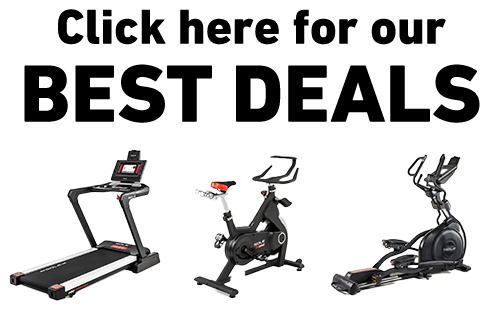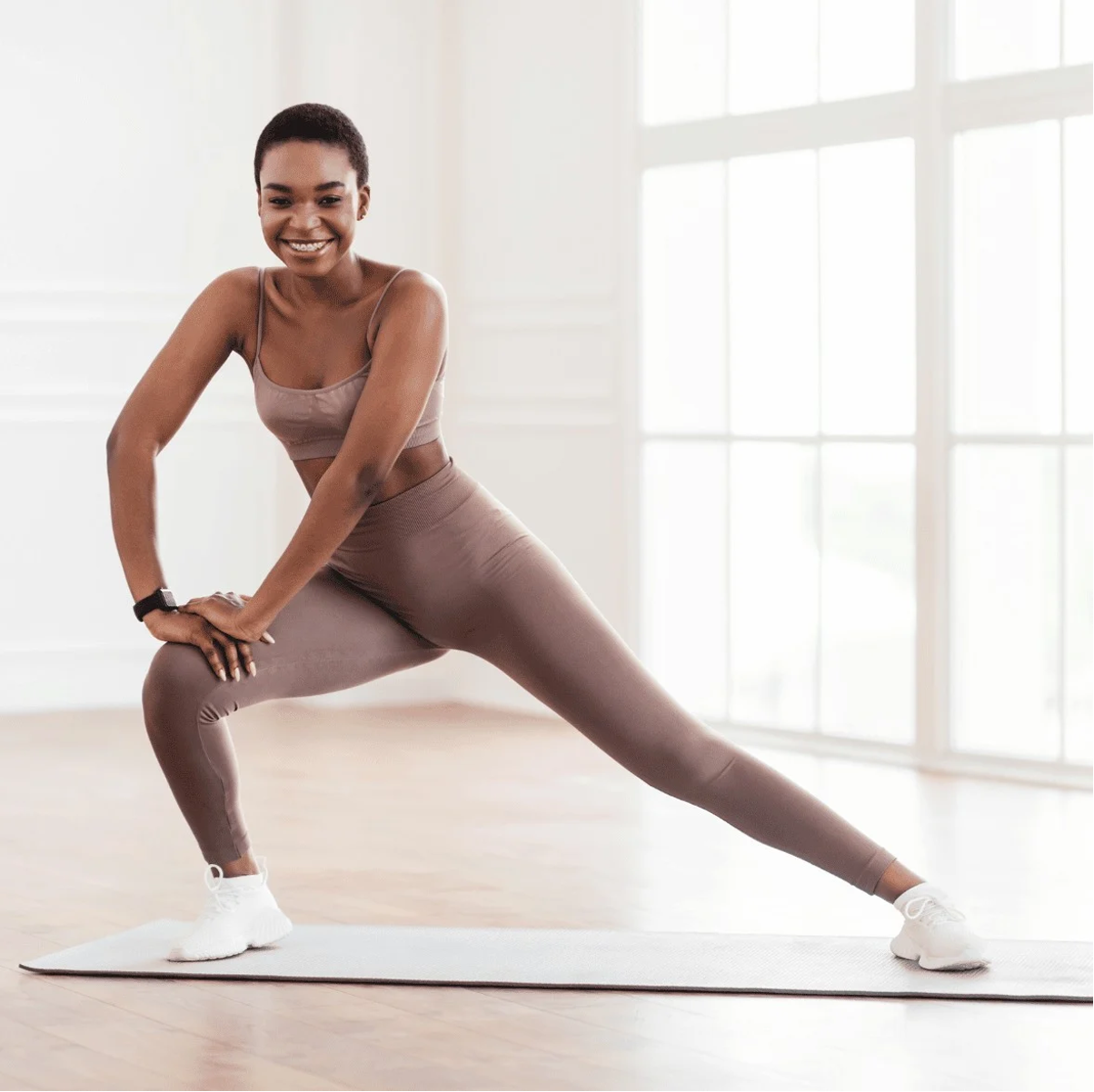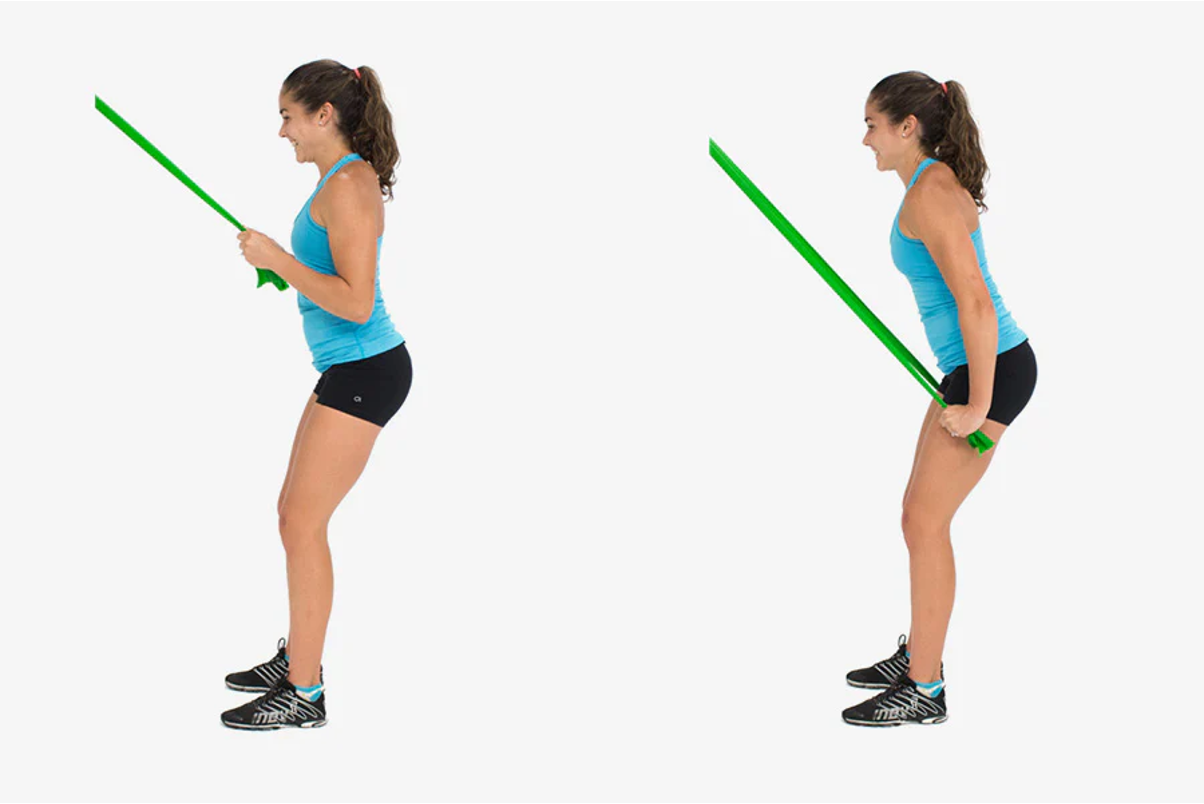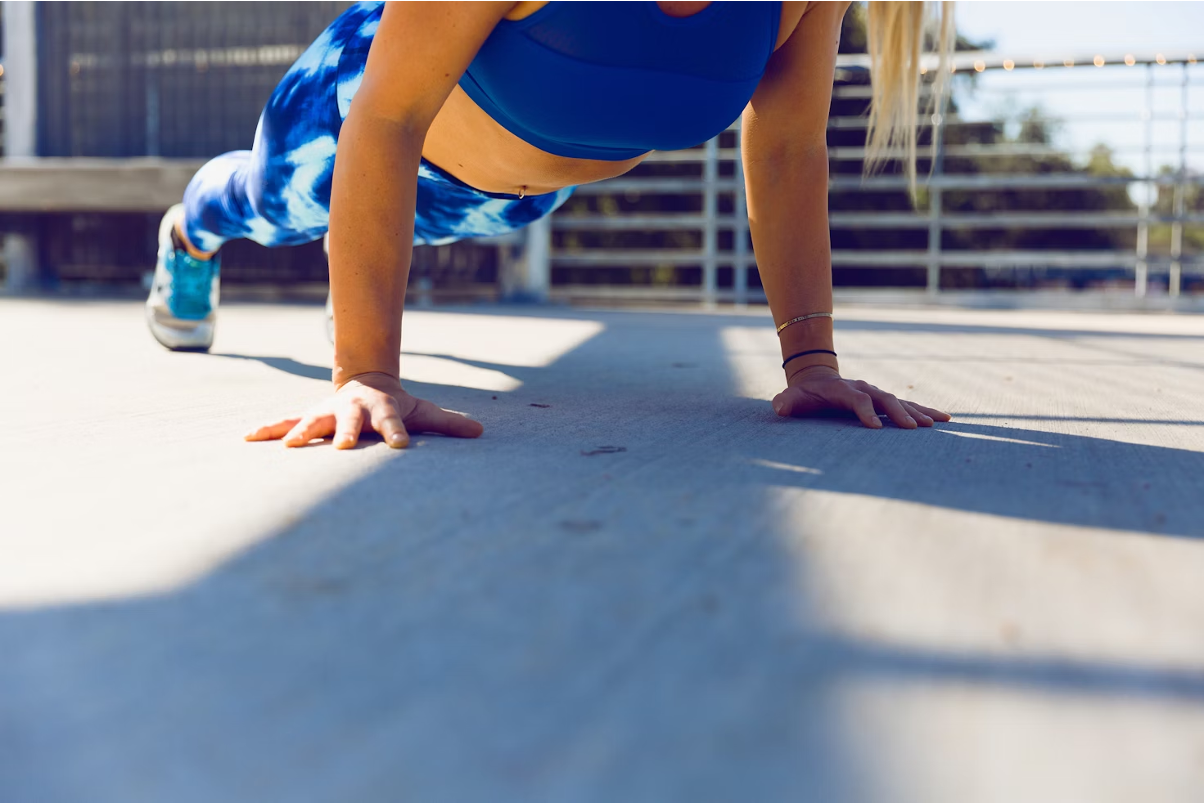Key Takeaways
- Side lunges are more beginner-friendly and focus on quads, glutes, and inner thighs, while cossack squats demand greater mobility and activate deeper hip stabilizers.
- Both exercises enhance lateral movement patterns often neglected in traditional training.
- Cossack squats require more ankle mobility and hip flexibility.
- Regular practice of these lateral movements prevents injuries by strengthening muscles that stabilize knees and hips during everyday activities.
- SOLE adjustable dumbbells allow for precise progressive loading for lateral movements, while the SW116 bench provides modification options for all fitness levels.
Which Lateral Movement Wins? Side Lunges vs Cossack Squats
Traditional workouts often overlook lateral movements, leaving many people with strength imbalances and mobility restrictions. Side lunges and Cossack squats challenge your body in the frontal plane, developing strength and mobility that transfers to better athletic performance and everyday movement. The difference between stable knees during sports or experiencing pain often comes down to how well you've trained these side-to-side patterns.
|
At SOLE, we're proud to offer top-quality exercise equipment designed for home and gym use. Our machines are built to meet the highest standards of durability and performance, making them ideal for fitness enthusiasts at any level. SOLE Products
|
Side Lunge Mechanics: Proper Form and Execution
Side lunges create a foundation for lateral strength and mobility while being accessible to most fitness levels. The movement starts from standing with feet parallel and hip-width apart.
Unlike forward lunges that work in one plane, side lunges challenge your body's ability to control side movement, engaging often under-trained muscles.
The beauty of side lunges is their simplicity and effectiveness. They train your body to absorb and produce force laterally while maintaining proper alignment. This transfers directly to improved performance in sports requiring side movement like tennis, basketball, and soccer.
Step-by-Step Side Lunge Technique
Mastering the correct form for side lunges requires attention to key details. Start with feet hip-width apart and toes forward. Take a wide step directly right with your right foot, keeping your left foot planted. As you step, bend your right knee while keeping your left leg straight, pushing your hips back like sitting in a chair. Keep the right foot flat with your toes forward, not outward.
Lower until the right thigh is parallel to the floor, or as low as mobility allows while maintaining a neutral spine. The left leg stays completely straight with the flat of your foot. Push through the right heel to return to start, engaging your glutes and inner thighs as you rise. The movement should feel controlled throughout, with no knee collapse or excessive forward lean.
Common Form Mistakes to Avoid
Even experienced exercisers make form errors that reduce effectiveness and increase injury risk. The most common mistake is letting the knee cave inward during the lunge, stressing your medial knee. Another frequent error is insufficient hip hinge; bending forward at your waist instead of pushing your hips back transfers tension away from the target muscles into your lower back.
Be careful with excessively lunging your foot outward, creating torque at the knee. Many people also take too narrow a step, limiting hip mobility and the benefits to your adductor.
Side Lunge Variations for All Fitness Levels
Side lunges adapt to any fitness level through thoughtful progressions. Beginners start with supported side lunges, holding a stable surface for balance while developing strength and coordination. As your confidence grows, progress to dynamic movements like alternating side lunges or adding pulses at bottom position.
Intermediate exercisers can add weights with goblet or front-racked positions. Advanced athletes can do plyometric variations like lateral lunge jumps or combination movements between forward and side lunges.
|
Side Lunge Variation |
Difficulty Level |
Key Benefit |
|
Static Side Lunge |
Beginner |
Builds basic movement pattern |
|
Dumbbell Side Lunge |
Intermediate |
Adds resistance for strength |
|
Sliding Side Lunge |
Intermediate |
Increases adductor stretch |
|
Plyometric Side Lunge |
Advanced |
Develops explosive power |
Cossack Squat Breakdown: Master This Challenging Move
The Cossack squat elevates lateral training to a new challenge level, demanding greater mobility, stability, and strength than side lunges.
Cossack squats create a more extreme position where one leg bears weight in deep lateral squat while the other extends fully to the side.
Correct Cossack Squat Form: 5 Key Points
Begin with a wide stance, about twice your shoulder width, with your toes slightly pointing out. Shift your weight entirely to one leg while bending that knee deeply, keeping your heel planted. Simultaneously extend your opposite leg straight to the side that your foot is flexed, either with your toes up or your heel maintaining light contact with the floor. Keep your torso tall and upright with your chest straight and shoulders back.
The depth of the squat depends on your mobility, but aim to squat until your hamstring meets the calf on the squatting leg while keeping the opposite leg fully extended. Your arms can extend forward for balance, or you can hold them at chest level. Be sure to control how you transition from side to side; you should never rush or bounce. Each rep requires full core engagement to keep your spine aligned.
Progression Tips for Beginners
Full Cossack squats are advanced, but several progressions help build toward them safely. Start with a shortened range, only descending to quarter- or half-squat depth while getting comfortable with weight shift and lateral pattern. Use a suspension trainer or stable surface for support so you can work on your balance.
Focus initially on proper alignment rather than depth, making sure your knee tracks over your toes and your spine stays neutral. As your mobility improves, you can gradually increase the depth so long as you can maintain your form. Practice transition drills shifting weight center to side without fully committing to deep position. These partial movements help build your motor control and strength.
Why Your Ankle Mobility Matters for Cossack Squats
Ankle dorsiflexion, or the ability to bring the toes toward the shin, presents a primary limiting factor in Cossack squat performance. Without sufficient ankle mobility, you'll compensate by leaning forward excessively or lifting the heel, which compromises form and reduces the benefits. Cossack squats require approximately 35–45 degrees of ankle dorsiflexion on the working leg, which is significantly more than most people achieve through their daily activities.
This mobility requirement makes Cossack squats an assessment tool. If you struggle to achieve proper depth while maintaining an upright torso, your ankles likely need focused mobility work. Regular practice improves this range over time, which creates a positive cycle where better mobility enables better form, which further enhances mobility.
Muscle Activation: What Each Exercise Targets
Both exercises develop lower body strength through lateral patterns, but distinct mechanics create different muscle activation profiles.
Side Lunges: Primary Muscle Focus
Side lunges primarily target the quads, especially the vastus medialis (inner quad). This makes them excellent for knee stability and thigh development. The glutes, especially the gluteus medius and minimus, work as stabilizers to control your hip movement during the lateral step. The adductors experience both a stretch on the stationary leg and activation on the working leg, to create a balanced development.
The hamstrings contribute during the hip hinge component, especially when maintaining proper form by pushing the hips backward. The calves engage as stabilizers, particularly during the pushing phase when returning to standing. An often overlooked benefit is that you engage your tibialis anterior (shin muscle), which strengthens this commonly weak area and helps prevent shin splints.
Cossack Squats: Deeper Muscle Engagement
Cossack squats intensify demands on the lower body by creating deeper ranges and extreme positions. The adductors face a particular challenge in controlling the descent into the deep lateral squat while maintaining hip stability. The hip external rotators work overtime to maintain proper femur position throughout the movement, which strengthens these small but crucial muscles that many traditional exercises miss.
The quads engage dynamically through an extended range, which builds strength at longer muscle lengths where many people are weakest. This develops more complete strength through the entire muscle range. Cossack squats also create major tension in the lateral hip stabilizers, particularly the gluteus medius and TFL, as they control the pelvis position during this movement.
Activation Patterns in Hip Adductors and Abductors
The hip adductors and abductors experience different activation patterns between exercises. During side lunges, the stationary leg's adductors stretch eccentrically as you step out, while the working leg's adductors contract to control your knee position. The abductors, especially the gluteus medius, function primarily as stabilizers to prevent the pelvis from dropping on the non-working side.
Cossack squats create more intense demands on both groups. The adductors experience extreme lengthening on the extended leg while simultaneously requiring active control on the working leg.
Which Exercise Fits Your Goals?
Both movements deliver substantial benefits, but distinct characteristics make them more suitable for different situations.
Choose Side Lunges When...
Side lunges make an ideal starting point if you’re new to lateral training or returning from lower-body injuries. The controlled range and moderate mobility demands allow almost anyone to perform them successfully while still challenging the targeted muscles. If you're focusing on sports that require quick lateral movements, side lunges directly transfer to competition patterns.
If you have knee issues, side lunges are more accessible because they create less extreme knee flexion angles and are easily modified to reduce joint stress. Side lunges also serve as excellent accessory exercises in strength programs, and they can be progressively loaded with dumbbells, kettlebells, or barbells to build substantial lower body strength while improving mobility.
Choose Cossack Squats When...
Cossack squats become the preferred choice once you've developed a baseline of lateral strength and mobility. They're valuable for breaking through mobility plateaus, creating extreme positions that challenge end-range strength and flexibility simultaneously. Athletes in sports that require a lot of hip mobility will benefit from the position-specific strength that Cossack squats develop.
If you’re looking to address specific weaknesses in ankle mobility or deep hip control, Cossack squats provide a more intense stimulus than side lunges offer. They also serve as an excellent assessment tool for identifying left–right imbalances, as the deep position quickly reveals any asymmetries.
Level Up Your Lateral Training with SOLE's Versatile Equipment
While both side lunges and Cossack squats can be done with just bodyweight, SOLE's equipment takes them to the next level.
The SW180 and SW155 Adjustable Dumbbells are perfect for progressive loading. Start with lighter weights for goblet-position side lunges, then gradually increase as your lateral strength improves. Their quick-adjust system means you can easily drop weight if your form starts breaking down.
If you’re working on mobility first, the SW116 Weight Bench is an excellent prop for modified versions. Use it for supported side lunges while building confidence, or place one hand on it during Cossack squats as you work toward the full range of motion. The bench's sturdy construction means it won't wobble when you're using it for balance, which is crucial when you're in those deep lateral positions.
Don't overlook the SOLE Equipment Mat either. These exercises require solid footing, and the mat's non-slip surface gives you confidence to really push into those deep lateral positions without worrying about sliding. Plus, it cushions your knees if you need to modify it with kneeling variations.
The SOLE+ App guides you through proper progressions for both movements, showing you exactly how to advance from basic to advanced variations.
Frequently Asked Questions (FAQs)
Are side lunges or Cossack squats better for knee health?
Side lunges place less stress on the knees and offer more modification options, which makes them better for those with existing knee concerns. The controlled range allows you to limit knee flexion while still gaining the benefits. Cossack squats create more extreme knee angles, requiring greater control, potentially challenging compromised knees.
Can I perform these exercises if I have tight hips?
Yes, but you should modify how you do them. Hip tightness actually makes these movements more important, as they directly address the restricted mobility contributing to movement problems and pain patterns. With tight hips, begin with shorter-range side lunges, only moving as far as you can maintain proper form.
How often should I include lateral movements in my workout routine?
For most goals, including lateral movements 2–3 times weekly provides optimal benefits without overtraining. This frequency allows sufficient stimulus for adaptation and time for recovering between sessions. If you're specifically addressing a lateral movement deficit or rehabilitating, you might increase to 3–4 times weekly with careful volume and intensity management.
Do I need weights to make these exercises effective?
No, the bodyweight versions provide substantial benefits, especially for beginners or those focusing primarily on mobility. A bodyweight Cossack squat presents a significant challenge even for strong athletes due to the mobility demands and leverage disadvantages. Side lunges become more challenging by increasing the depth, adding pauses, or adjusting the tempo without external load.
That said, adding weight progressively enhances strength development once you've mastered the basic form. Goblet and front rack positions work well for both exercises, maintaining proper posture while adding resistance.
How can SOLE equipment help me progress from side lunges to Cossack squats?
Start with the SW180 or SW155 Adjustable Dumbbells for weighted side lunges. The beauty is you can dial in exactly the right weight. Maybe you need 15 pounds for side lunges but only bodyweight for Cossack squats at first. With adjustable dumbbells, you're not stuck with weights that are too heavy for one exercise or too light for another.
The SW116 Weight Bench is actually clutch for this progression. Use it as a support for side lunges if you're building balance, then as you get stronger, try elevated Cossack squats with one foot on the bench. This reduces the mobility demands while you build strength. As you improve, lower the elevation until you're doing them on the floor.




Leave a comment
This site is protected by hCaptcha and the hCaptcha Privacy Policy and Terms of Service apply.